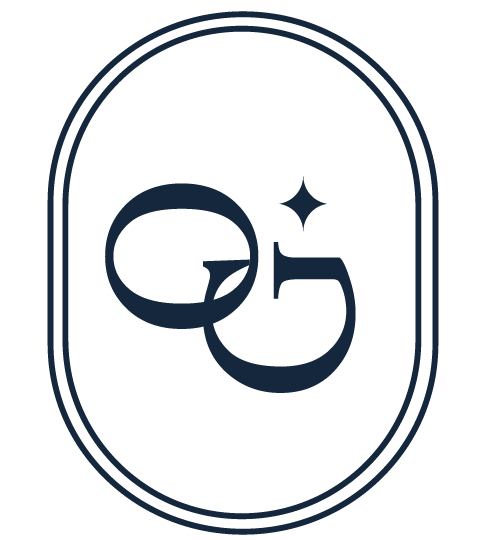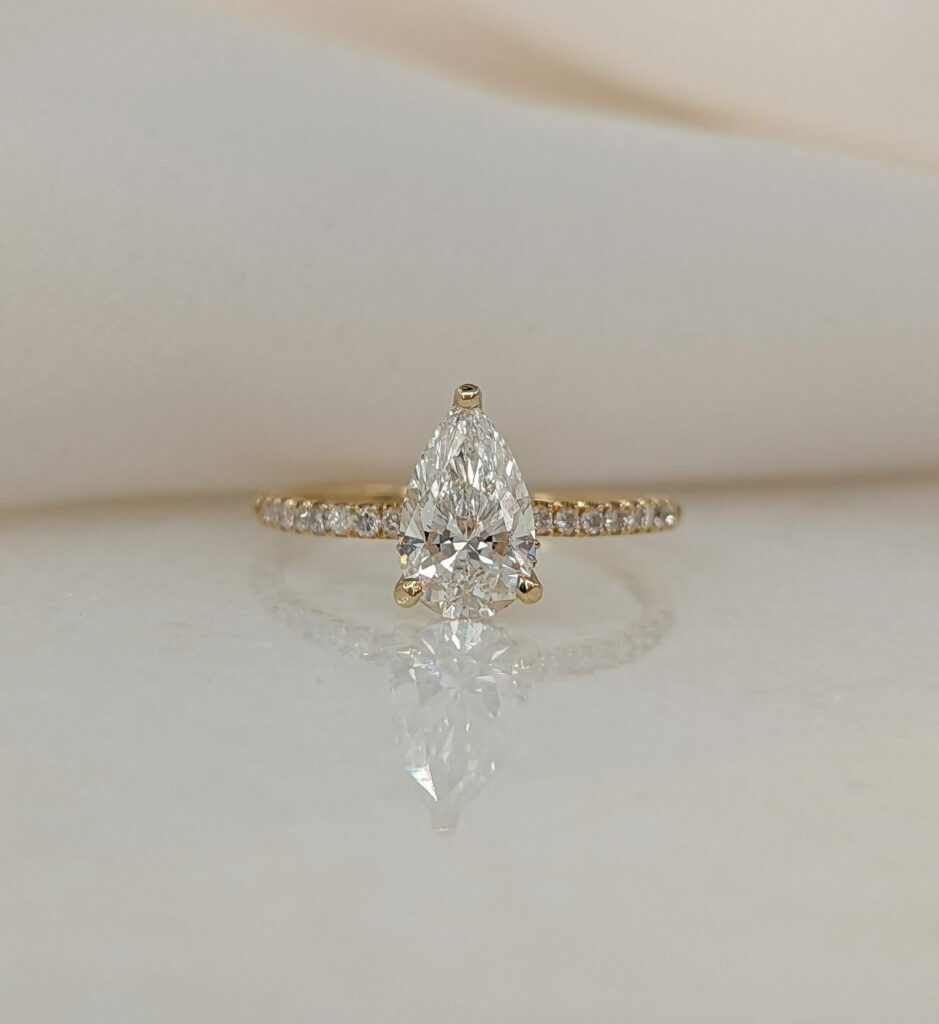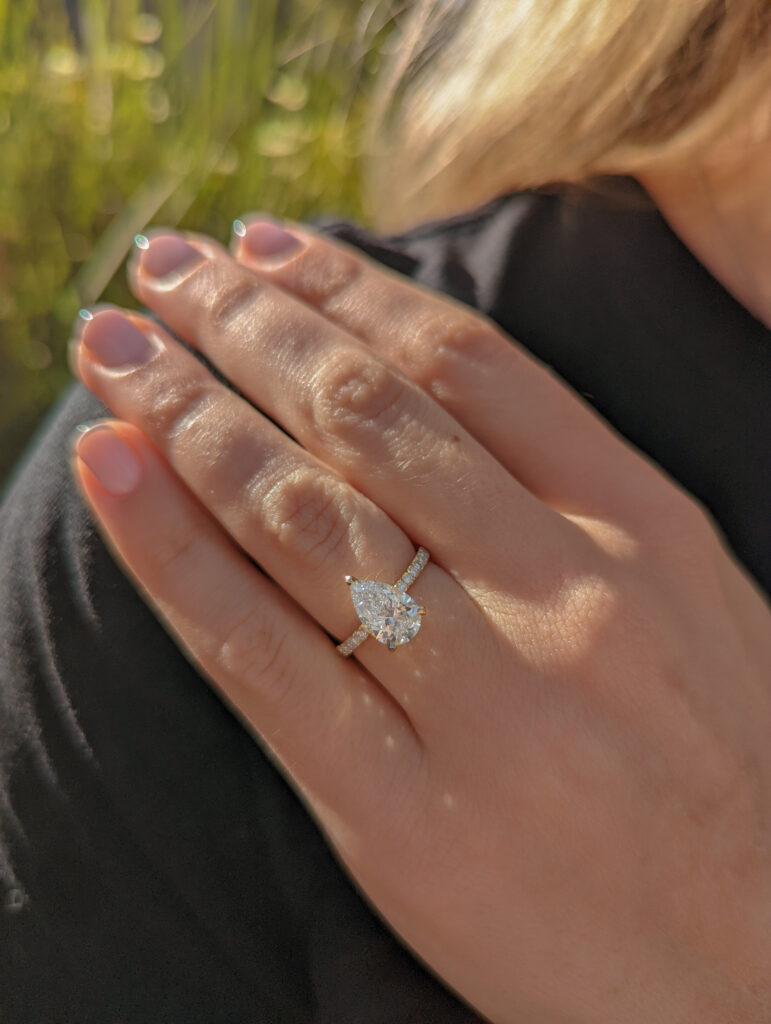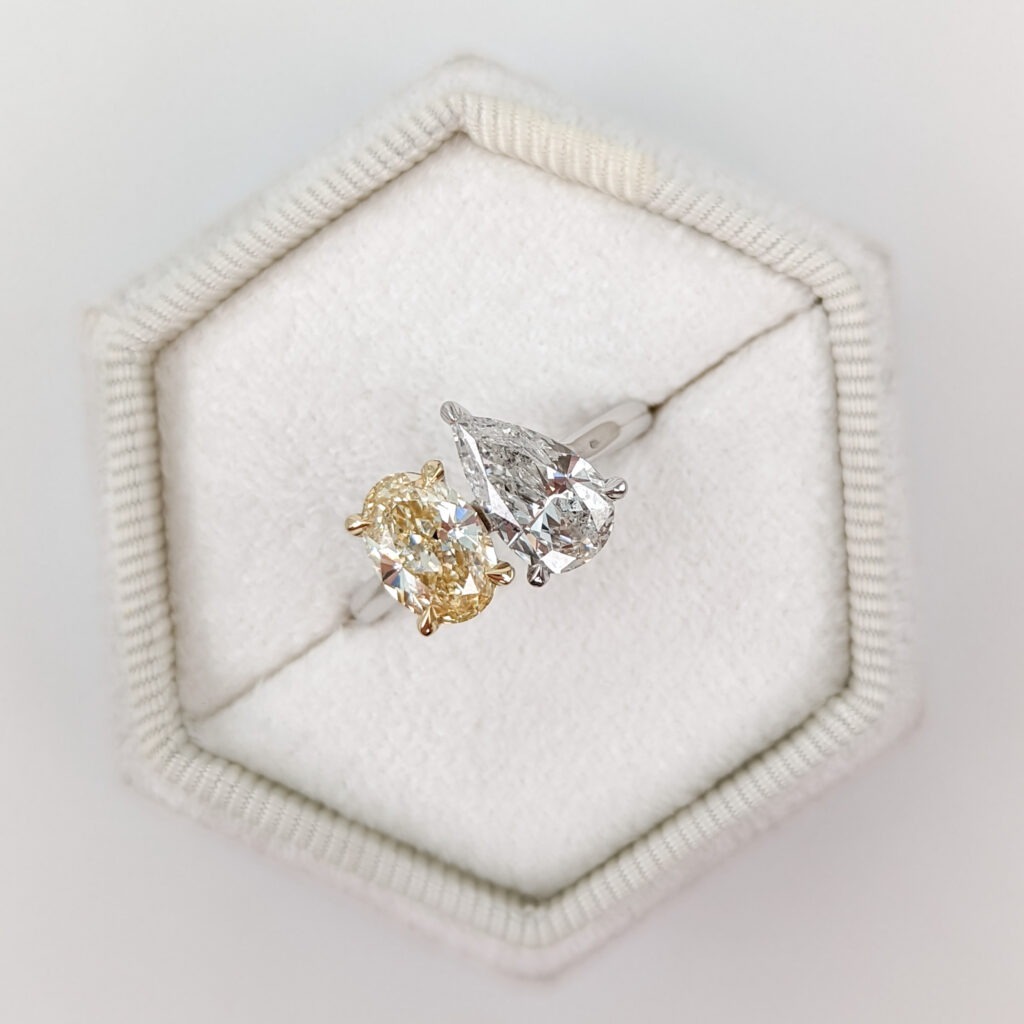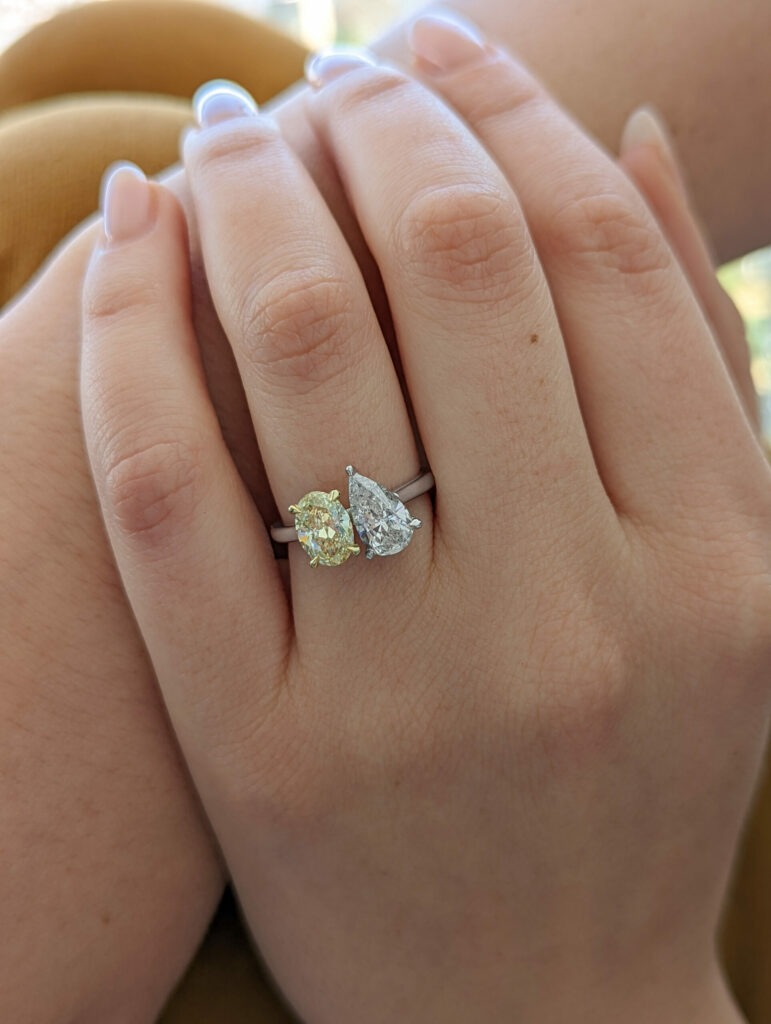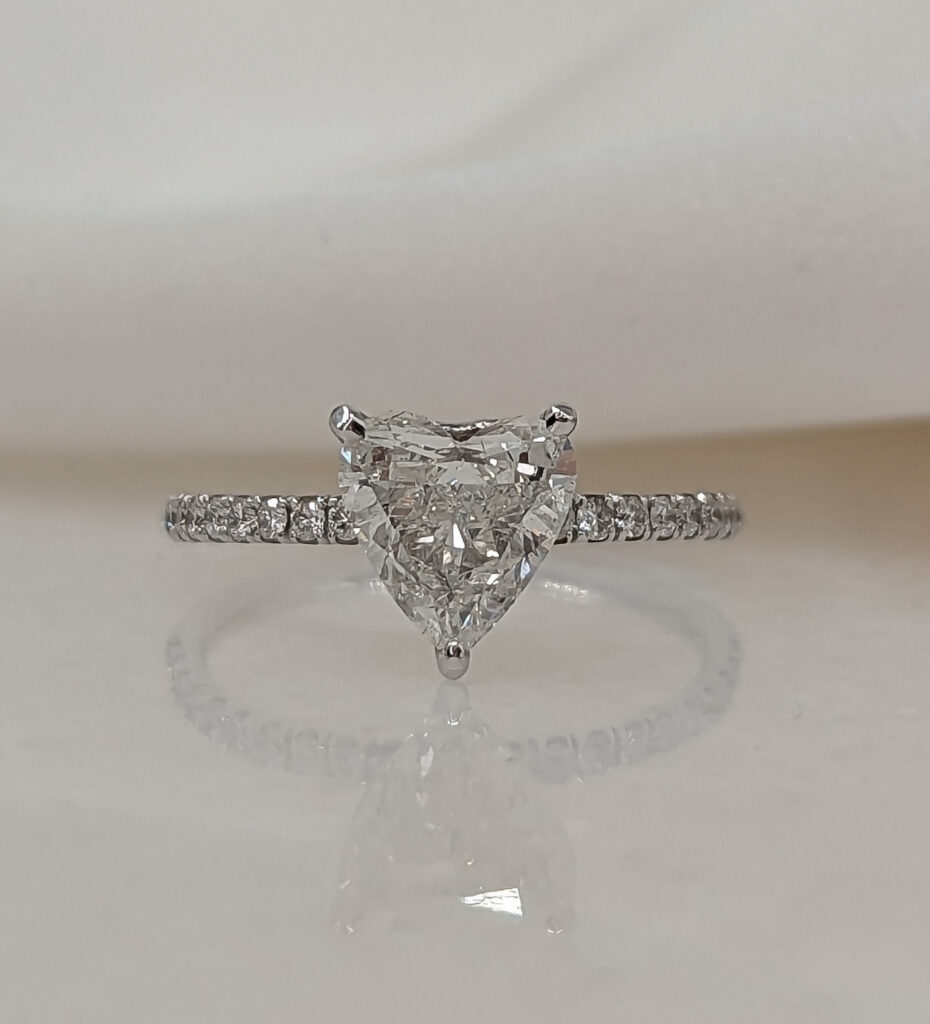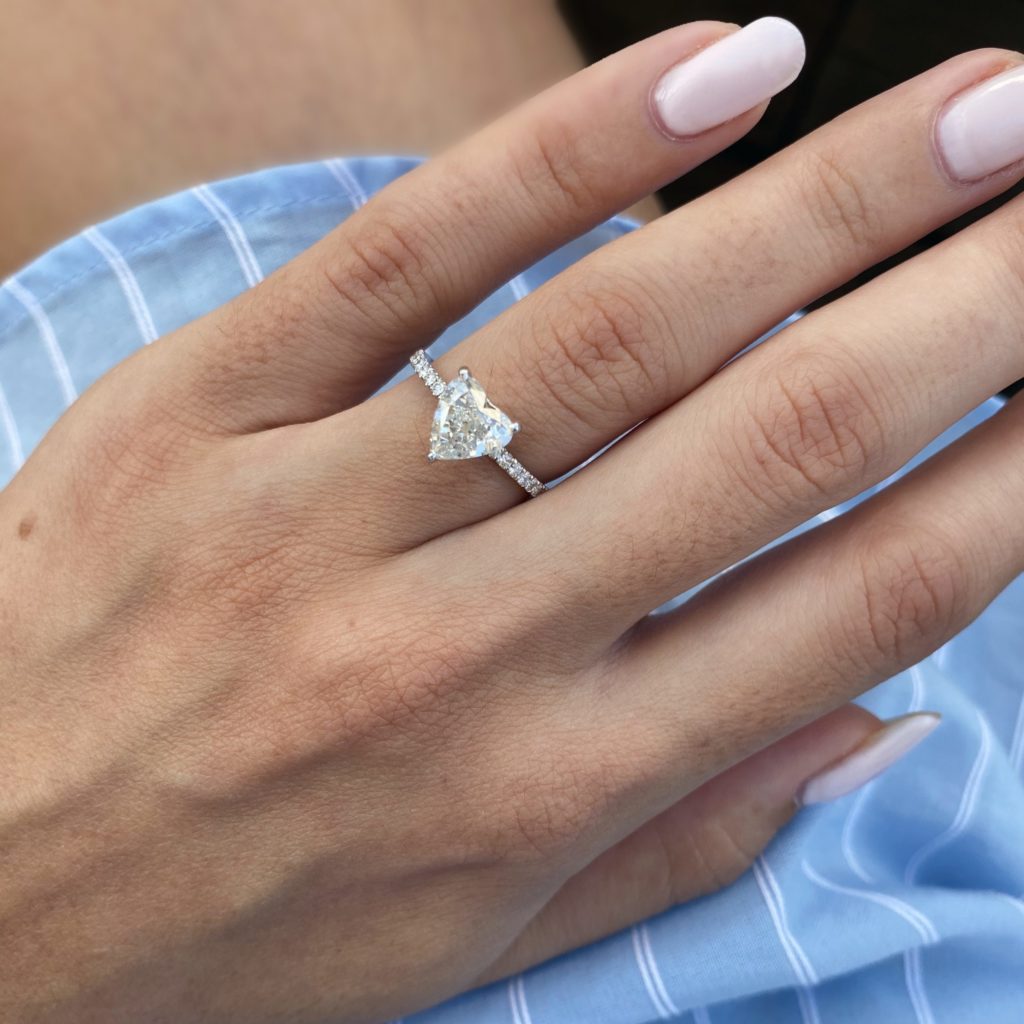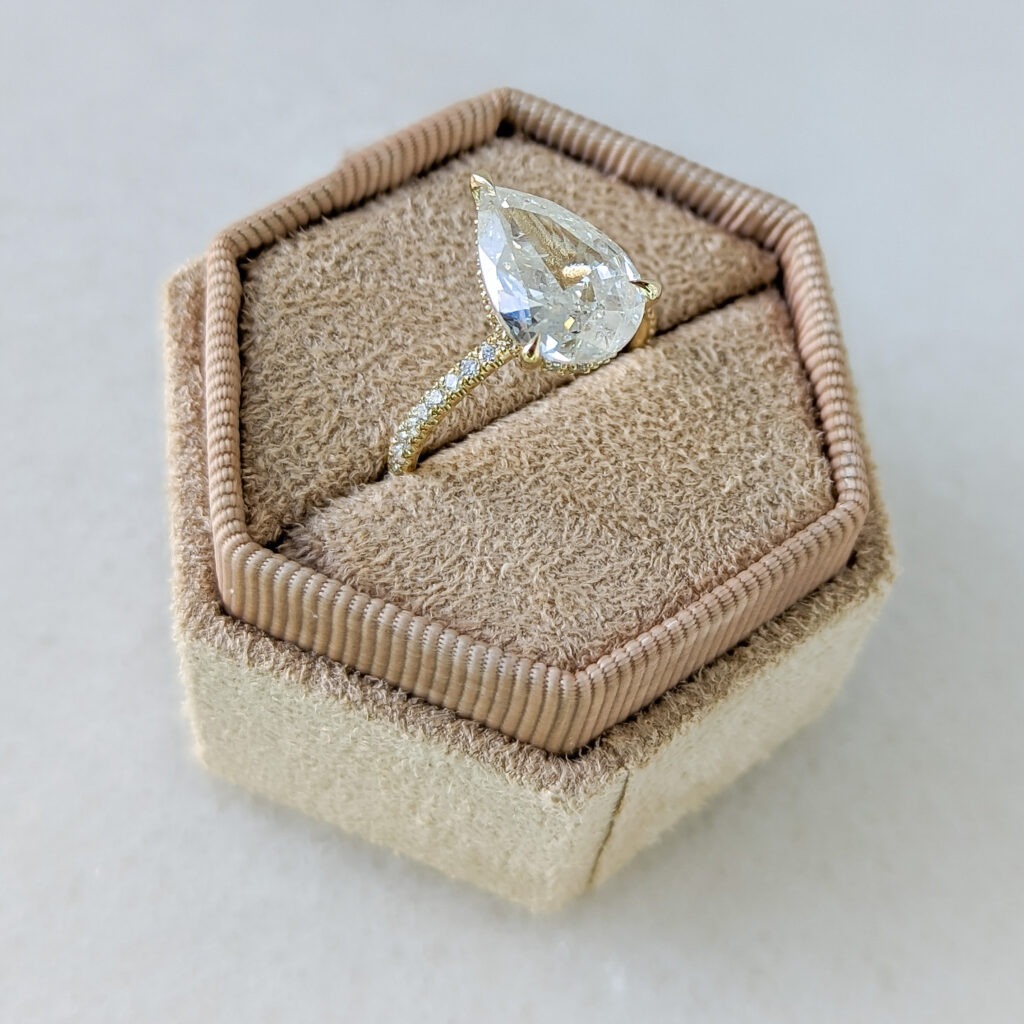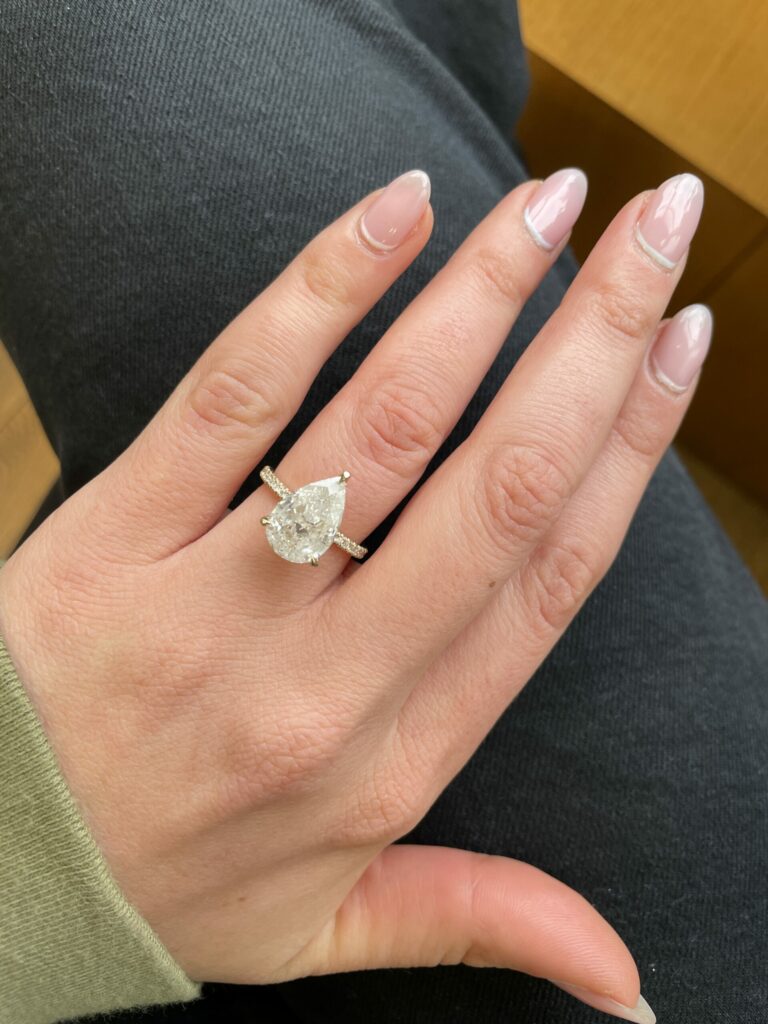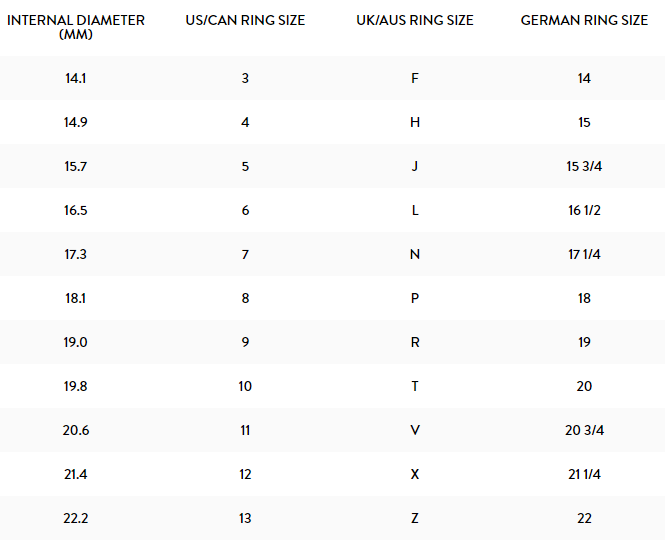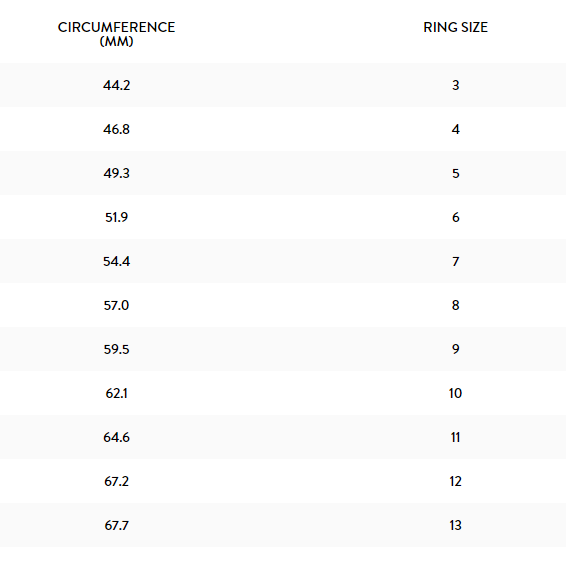Table of Contents
Getting a diamond with the right dimensions will ensure that you get a quality diamond that possesses the sparkle you’re looking for.
Diamond dimensions refer to properties like its depth, table, and length-to-width ratio.
We’ll review the different aspects of diamond proportion and diamond measurements so you won’t be disappointed with the stone you choose.
How Is Diamond Proportion Calculated?
The diamond proportion takes into account the size of the stone’s depth, table, and length-to-width ratio.
To get the depth, divide its height by its width.
To derive the table percentage, divide the width of the table (or the top surface) by the diameter.
Finally, calculate its length-to-width ratio by dividing the length of your stone by its width.
The recommended percentages and ratios differ based on your preferred cut. As an example, the popular round brilliant cut should ideally have a depth from 59% to 62.6%, a table between 54% and 57%, and a length-to-width ratio of 1.0 to 1.03.
A diamond’s proportion is important because it affects its sparkle and price. You want to get a diamond that has just the right proportion.
Factors Affecting Diamond Proportion
There are ten factors that affect diamond proportion:
- Crown angle refers to the angle from the top of the girdle until the edge of its crown.
- Crown height measures the top of the girdle to its table.
- Culet is the size of the diamond’s bottom tip.
- Girdle thickness considers the girdle’s height.
- Lower girdle length refers to the space that begins from the culet to where the facet meets the girdle.
- Pavilion angle measures the angle of a stone’s pavilion from the pavilion to the bottom of the girdle.
- Pavilion depth is the measurement from the bottom of the girdle to the culet.
- Star length is the percentage of the distance between the girdle and table.
- Table size considers the width and length of the table.
- Total depth is the distance from the culet to the table.
Ideal Cut Diamond Dimensions
As mentioned, the ideal diamond dimensions will depend on the cut of your choice. Here are the measurements to look for based on different diamond engagement rings cuts.
| Cut/Shape | Depth (%) | Table (%) | Length to Width Ratio |
| Round brilliant | 59 – 62.6 | 54 – 57 | 1.0 – 1.03 |
| Princess | 68 – 74 | 69 – 75 | 1.0 – 1.04 |
| Cushion | 61 – 68 | 68 and below | 1.0 – 1.08 if square 1.15 – 1.25 if rectangle |
| Emerald | 61 – 68 | 61 – 69 | 1.30 – 1.45 |
| Asscher | 61 – 68 | 61 – 69 | 1.0 – 1.05 |
| Oval | 63 and below | 53 – 59 | 1.30 – 1.50 |
| Pear | 68 and below | 53 | 1.45 – 1.75 |
| Radiant | 67 and below | 61 – 69 | 1.00 – 1.95 if square 1.20 – 1.50 if rectangle |
| Heart | 56 – 66 | 56 – 62 | 1.0 |
| Marquise | 58 – 62 | 53 – 63 | 1.85 – 2.1 |
Diamond Measurement Chart
Diamonds are often referred to by their carats, however, this doesn’t always provide a clear idea of how big they’ll look when worn. To make this easier, jewelers use a diamond measurement chart like the one below.
This table provides measurements in millimeters for round brilliant cut diamonds.
| Carat | Size in Millimeters | Carat | Size in Millimeters | Carat | Size in Millimeters |
| 0.0025 | 0.8 | 0.14 | 3.25 | 0.84 | 6 |
| 0.005 | 1.0 | 0.17 | 3.50 | 0.93 | 6.25 |
| 0.0067 | 1.1 | 0.21 | 3.75 | 1.00 | 6.5 |
| 0.009 | 1.2 | 0.25 | 4 | 1.25 | 6.8 |
| 0.01 | 1.25 – 1.3 | 0.28 | 4.25 | 1.30 | 7 |
| 0.015 | 1.5 | 0.36 | 4.5 | 1.50 | 7.3 |
| 0.02 | 1.75 | 0.44 | 4.75 | 1.67 | 7.5 |
| 0.025 | 1.8 | 0.50 | 5.0 | 1.75 | 7.75 |
| 0.03 | 2 | 0.56 | 5.25 | 2.00 | 8 |
| 0.06 | 2.2 | 0.66 | 5.5 | 2.11 | 8.25 |
| 0.08 | 2.75 | 0.75 | 5.75 | 2.43 | 8.5 |
Why Buy at Othergems?
Othergems manufactures and supplies lab-grown and natural diamonds. We have been in business for over 30 years and are a trusted retailer of engagement rings, diamond bands, and other fine jewelry.
We can also help you find the diamond with your preferred dimensions, cut, clarity, shape, and color. You can create your own design and we will make your dream jewelry a reality.
FAQs
How do you get diamond dimensions?
A diamond’s dimensions consider the size of the stone’s depth, table, and length-to-width ratio. Other factors that affect its dimensions include the crown angle, culet, pavilion depth, and table size. For a full list, refer to the section entitled “Factors Affecting Diamond Proportion.”
How are diamonds measured and sold?
Diamonds are measured by size and carat. The size refers to how big the diamond’s table is and the carat refers to its weight. The larger the carat, the heavier the size, and the more expensive the diamond.
What is “cent” in diamond?
A cent is another term of measurement used to describe diamond weight. 100 cents make up one carat.
What is 7mm in carats?
Seven millimeters is equivalent to approximately 1.3 carats although there will be minute differences depending on the type of cut.
How can you tell carat size?
You can determine carat by weighing the diamond. A carat is equivalent to 0.2 grams.
How many mm is 5 carats?
A 5-carat diamond is around 5.2 millimeters. This may vary based on the cut.
What is a good proportion of a diamond?
The ideal proportions will depend on the cut you want. Each cut has different recommended proportions.
What do the proportions of a diamond mean?
A diamond’s proportion refers to its size, shape, and angle of its facets. It’s an important aspect because it determines how much light reflects off the diamond, allowing it to give an impressive sparkle.

